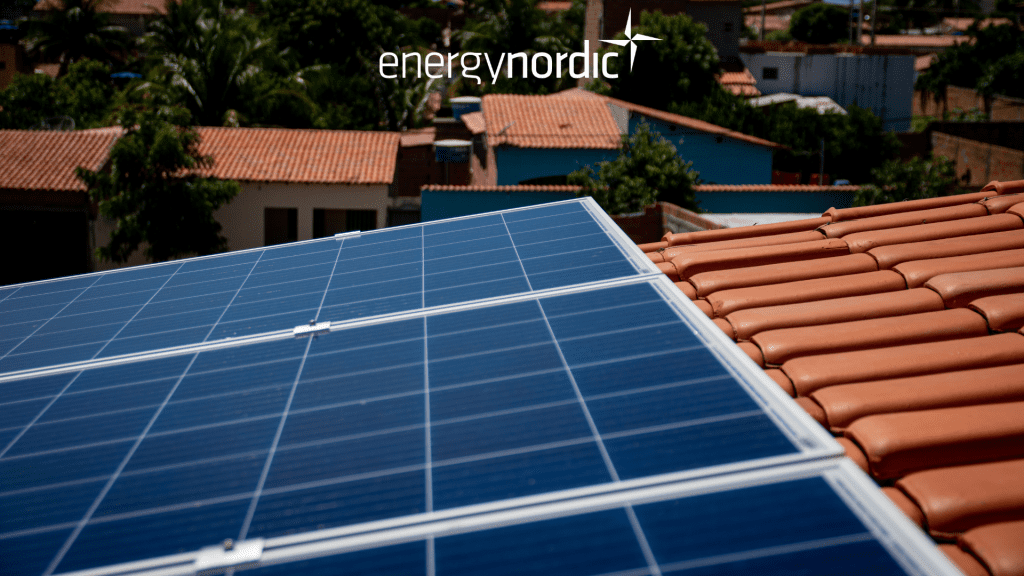Experiment: Lowering Dutch Electricity Prices During Solar Surplus

Table of Contents
The Problem: Managing Solar Surplus in the Netherlands
The intermittent nature of solar energy presents a significant challenge to the stability of the Dutch electricity grid. Solar panel output fluctuates dramatically based on weather conditions, leading to periods of substantial surplus generation, especially during sunny midday hours. The current infrastructure struggles to cope with these peaks, leading to several key problems:
- Wasted Renewable Energy: Excess solar power is often curtailed or simply wasted because the grid lacks the capacity to absorb it. This represents a significant loss of clean energy and a missed opportunity for cost savings.
- Price Instability: The unpredictable nature of solar energy contributes to fluctuations in electricity prices, making it difficult for both consumers and energy suppliers to plan effectively.
- Grid Limitations: The existing Dutch energy grid, while constantly being upgraded, still faces limitations in its ability to efficiently integrate and manage large volumes of intermittent renewable energy sources.
Bullet Points:
- Seasonal Variations: Solar energy production is significantly higher during summer months, resulting in even greater surplus during peak sunlight hours.
- Uneven Distribution: Solar panel installations are not evenly distributed across the Netherlands, creating localized peaks and troughs in energy supply.
- Current Grid Infrastructure Limitations: Outdated infrastructure in some areas hinders the efficient transportation of excess solar energy to areas with higher demand.
- Economic Impact of Wasted Solar Energy: The economic cost of wasted renewable energy is substantial, both in terms of lost potential savings and the environmental consequences of relying on less sustainable energy sources.
The Experiment: Dynamic Pricing and Demand-Side Management
This innovative experiment utilizes dynamic electricity pricing and demand-side management techniques to address the challenge of solar surplus. The core concept involves adjusting electricity prices in real-time based on the actual level of solar energy being generated. This is achieved through:
- Smart Meters: Smart meters provide real-time data on energy consumption, allowing for precise monitoring and price adjustments.
- Data Analytics Platforms: Sophisticated algorithms analyze the incoming data from smart meters and solar energy production forecasts to calculate optimal electricity prices.
- Real-Time Price Adjustments: Electricity prices are lowered during periods of high solar energy surplus, incentivizing consumers to increase their energy consumption during these times.
- Consumer Participation: The success of this experiment relies heavily on consumer participation and acceptance of dynamic pricing. Transparent communication and feedback mechanisms are crucial.
Bullet Points:
- Lowering Electricity Prices: Reduced prices during peak solar generation directly benefit consumers and encourage increased energy use.
- Incentivizing Consumption: Lower prices incentivize consumers to shift energy-intensive activities, such as washing machines or dishwashers, to times of solar surplus.
- Real-Time Data Analysis: Constant monitoring and analysis of data ensure prices accurately reflect the available solar energy.
- Consumer Feedback: Regular surveys and feedback mechanisms ensure the dynamic pricing model is adaptable to consumer needs and preferences.
Potential Benefits and Challenges of Lowering Dutch Electricity Prices
The potential benefits of this experiment are significant, impacting both consumers and the environment:
- Reduced Energy Costs: Lower electricity prices during peak solar generation directly translate to savings for Dutch households and businesses.
- Increased Renewable Energy Usage: By effectively utilizing solar surplus, this project significantly reduces reliance on fossil fuels, minimizing carbon emissions.
However, the implementation of dynamic pricing also presents challenges:
- Consumer Acceptance: Some consumers may be hesitant to accept fluctuating electricity prices, requiring clear communication and education.
- Technological Hurdles: Widespread adoption necessitates upgrading the existing energy grid infrastructure to handle the rapid fluctuations in energy supply and demand.
- Grid Stability: Rapid price changes could potentially lead to unforeseen instability in the grid if not carefully managed.
Bullet Points:
- Reduced energy costs for Dutch households and businesses: Direct financial benefits for consumers.
- Increased adoption of renewable energy sources: Positive environmental impact through reduced reliance on fossil fuels.
- Potential for grid instability during rapid price fluctuations: Careful management and grid modernization are crucial.
- Challenges of educating consumers about dynamic pricing: Effective communication strategies are vital for success.
- Technological limitations and upgrades required for widespread adoption: Investment in smart grid technologies is necessary.
Data Collection and Analysis Methods
The experiment utilizes a robust data collection and analysis system to accurately measure its effectiveness. This involves:
- Smart Meter Data: Real-time data on energy consumption from smart meters is continuously collected and analyzed.
- Solar Energy Production Data: Data on solar energy generation is collected from various sources, including solar farms and individual installations.
- Price Fluctuation Data: Real-time electricity price data is meticulously tracked to assess the impact of dynamic pricing.
- Consumer Behavior Data: Surveys and feedback mechanisms are used to gather data on consumer response to dynamic pricing.
Conclusion:
This experiment on lowering Dutch electricity prices during solar surplus presents a significant opportunity to advance the Netherlands' renewable energy transition. By intelligently managing the influx of solar energy through dynamic pricing and demand-side management, the project aims to create a more sustainable and affordable energy system. The insights gained from this initiative will be crucial in shaping future energy policies, not only in the Netherlands, but globally. Learn more about this innovative project and its potential impact on Dutch electricity prices and the broader renewable energy landscape. Join the conversation and help shape the future of sustainable energy in the Netherlands!

Featured Posts
-
 Millions Stolen Insider Reveals Office365 Breach And Executive Targeting
May 04, 2025
Millions Stolen Insider Reveals Office365 Breach And Executive Targeting
May 04, 2025 -
 Nhl Stanley Cup Playoffs A Guide To First Round Matchups
May 04, 2025
Nhl Stanley Cup Playoffs A Guide To First Round Matchups
May 04, 2025 -
 Understanding Lizzos Weight Loss Success Her Methods Revealed
May 04, 2025
Understanding Lizzos Weight Loss Success Her Methods Revealed
May 04, 2025 -
 Singapores Political Landscape The Pap Faces Electoral Scrutiny
May 04, 2025
Singapores Political Landscape The Pap Faces Electoral Scrutiny
May 04, 2025 -
 Assessing The Threat Chinas Ev Industry And Americas Readiness
May 04, 2025
Assessing The Threat Chinas Ev Industry And Americas Readiness
May 04, 2025
Latest Posts
-
 Paddy Pimbletts Post Fight Yacht Party Ufc 314 Celebration
May 04, 2025
Paddy Pimbletts Post Fight Yacht Party Ufc 314 Celebration
May 04, 2025 -
 Ufc 314 Pay Per View Revised Bout Order
May 04, 2025
Ufc 314 Pay Per View Revised Bout Order
May 04, 2025 -
 Ufc Announces Fight Order Alterations For Ufc 314 Ppv
May 04, 2025
Ufc Announces Fight Order Alterations For Ufc 314 Ppv
May 04, 2025 -
 Updated Fight Card Ufc 314 Pay Per View Event Changes
May 04, 2025
Updated Fight Card Ufc 314 Pay Per View Event Changes
May 04, 2025 -
 Ufc 314 Revised Fight Order Revealed For Pay Per View
May 04, 2025
Ufc 314 Revised Fight Order Revealed For Pay Per View
May 04, 2025
